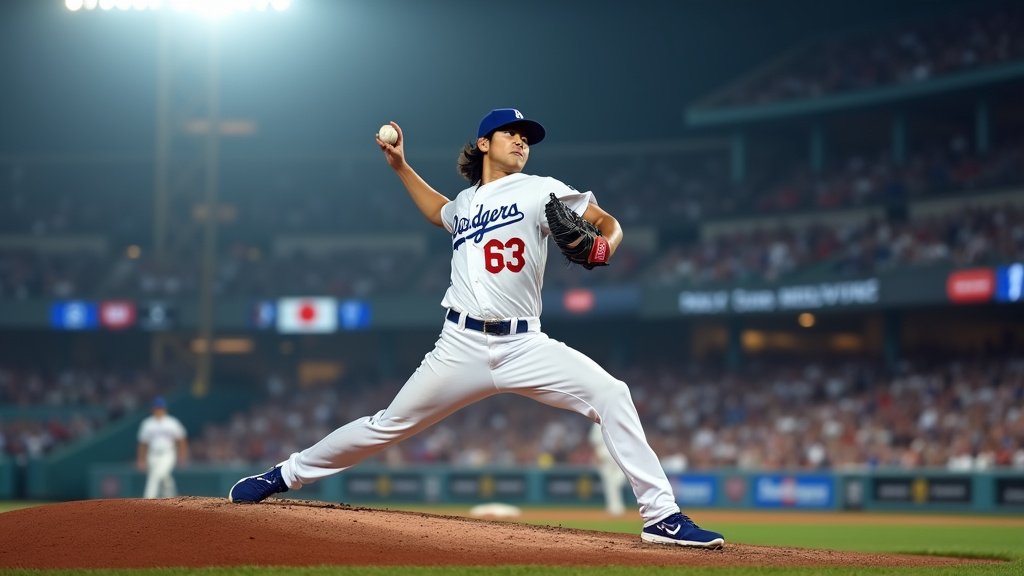On October 1, 2025, the Los Angeles Dodgers began their quest for back-to-back World Series championships with a dominant 10-5 victory over the Cincinnati Reds in Game 1 of the National League Wild Card Series. The star of the show was undoubtedly Shohei Ohtani, who unleashed his signature power, belting two impressive home runs and setting a new career-best exit velocity against a major league pitch.
A Blistering Start to October
The electrifying offensive display began from the leadoff spot for Ohtani. In the bottom of the first inning, facing Reds ace Hunter Greene, Ohtani connected on a 100.4 mph fastball, sending it a projected 375 feet for a solo home run. This majestic blast registered an astonishing 117.7 mph exit velocity, marking the fastest pitch Ohtani has ever homered off in his decorated Major League Baseball career. Teammate Teoscar Hernández lauded Ohtani’s performance, stating, “Ohtani is going to be Ohtani, you know, he can do that and more”.
Ohtani wasn’t finished displaying his offensive might. In the sixth inning, with runners on base, he connected again, this time sending a Connor Phillips offering 454 feet over the right-center wall for his second two-run homer of the night. These homers were part of a formidable offensive output from the Los Angeles Dodgers, who tied a franchise postseason record with five home runs in the game and amassed 15 hits.
Ohtani’s Power Pedigree on Full Display
Ohtani’s dual-homer performance was a powerful continuation of an already historic season. He entered the postseason having set a new Dodgers franchise record with 55 home runs during the regular season, surpassing his own previous mark. His ability to consistently generate elite exit velocities and prodigious distance on his batted balls has become a hallmark of his game, with Statcast data often highlighting his exceptional hard-hit percentages and barrel rates. His September surge, batting .312 with 10 home runs, further signaled his readiness for the high-stakes environment of the playoffs.
Setting the Postseason Tone
Manager Dave Roberts emphasized the critical role Ohtani plays in setting the tone for the Dodgers’ postseason run. “He’s in and has been in postseason mode,” Roberts commented, noting Ohtani’s sharpened focus and improved plate appearances. The pressure of October baseball is precisely the stage Ohtani was signed to dominate, a sentiment echoed by his teammates. Max Muncy highlighted Ohtani’s importance, stating, “It’s important that Ohtani sets the tone like he usually does. In these short postseason series that’s the most important part. If he goes out there and applies pressure, it will help a lot”.
Beyond his offensive heroics, Ohtani remains a dual-threat presence, potentially making his postseason pitching debut if the Wild Card Series extended to a decisive Game 3. This remarkable versatility underscores why Ohtani is considered a generational talent, consistently meeting and even exceeding the sky-high expectations that accompanied his record-breaking contract with the Los Angeles Dodgers.
The “Ohtani Effect” Continues
As the Dodgers embark on their playoff journey, Ohtani’s impact extends far beyond the batter’s box and pitching mound. His arrival has significantly boosted the franchise’s value, attracting new sponsorships, driving attendance, and enhancing the team’s global brand recognition. The “Ohtani effect” has become synonymous with increased fan engagement and economic activity in Los Angeles, making him not just a baseball superstar, but a cultural and economic phenomenon.
With the Dodgers securing a crucial Game 1 victory, Shohei Ohtani’s two-homer performance, highlighted by an extraordinary exit velocity, serves as a powerful statement of intent. As the postseason unfolds, all eyes will remain on the Dodgers’ superstar, ready to witness more extraordinary moments that continue to redefine what is possible on the baseball diamond.





